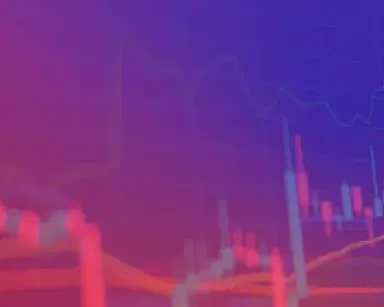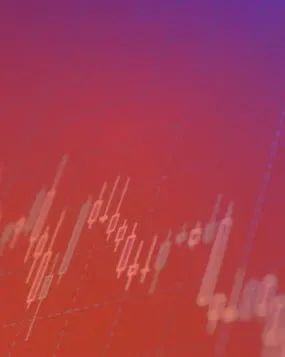
Monetary Authority of Singapore meeting
The Monetary Authority of Singapore (MAS) has a major say over the markets in Singapore, managing both monetary policy and financial regulation. Read our guide to how the MAS affects your trading here.
- How to trade the MAS meetings
- What is the Monetary Authority of Singapore (MAS)?
- What does the MAS do?
- The Monetary Authority of Singapore and monetary policy
- How does the MAS affect the SGD exchange rate?
- When does the MAS meet?
- Who owns the Monetary Authority of Singapore?
- Monetary Authority of Singapore FAQs
How to trade MAS meetings
While they don’t occur too frequently, the meetings of the Monetary Authority of Singapore can offer significant insight into the future direction of the Singapore dollar against other currencies.
Unlike other central bank meetings, which tend to have an indirect effect on related FX pairs, MAS meetings are a clear indication of how SGD will be allowed to float in the coming months. While the basket of currencies and limits of the policy band are kept vague, this can still provide precious insight for forex traders.
Common SGD pairs to trade include:
However, like other central bank meetings, most analysts and traders will attempt to predict the MAS policy well ahead of any announcements – which can mean the monetary policy decisions are priced in ahead of the meeting itself. As such, volatility may only arise when the central bank moves against the consensus, shocking the markets.
Plus, MAS decisions can take weeks and months to make an impact.
What is the Monetary Authority of Singapore (MAS)?
The Monetary Authority of Singapore is Singapore’s central bank. Established in 1971, it oversees the Singaporean economy and financial sector – aiming to achieve economic growth while keeping inflation in check.
While that aim is similar to other central banks such as the Bank of England, Federal Reserve and Reserve Bank of Australia, the Monetary Authority of Singapore works a little bit differently, with a broader remit and unique set of tools.
What does the Monetary Authority of Singapore do?
The Monetary Authority of Singapore has three key functions:
- Promoting economic growth and financial stability
- Maintaining a robust, resilient and trusted financial centre
- Developing an innovative and inclusive financial centre
As well as operating as the central bank for Singapore, the MAS is its financial regulator. Singapore is a major banking and forex trading hub – behind only the UK and US – and the MAS has the remit of supervising the sector, creating and enforcing rules that ensure fair play.
In recent years, the MAS has also taken on the role of regulating the country’s cryptocurrency markets, as well as driving FinTech innovation in the region.
Finally, the Monetary Authority is the chief financial agent of the Singapore government, issuing currency and selling bonds to fund public spending.
The Monetary Authority of Singapore and monetary policy
The MAS controls monetary policy primarily by targeting a stable exchange rate between the Singaporean Dollar (SGD) and other major currencies. Unlike other central banks, it has no control over the Singapore base rate. Instead, it leaves the setting of interest rates to the open market.
Singapore’s economy is heavily dependent on imports and exports, which together total over 300% of GDP – meaning its international markets are much bigger than its domestic ones. Due to this, exchange rates are seen to have much more of an impact on economic growth and inflation than interest rates.
For example, if the MAS takes action to lower the price of the Singapore dollar against other currencies, it makes imports comparatively more expensive. As Singapore imports almost all the products it consumes, this drives the cost of goods up and increases inflation.
On the other hand, by allowing SGD to rise at a faster rate, imports become cheaper and inflation falls. However, this will make exports more expensive, so the MAS must maintain a careful balance.
Like many other central banks, the MAS has a target inflation rate. It bases its inflation target on the Consumer Price Index (CPI), aiming for a rate just below 2%.
How does the MAS affect the SGD exchange rate?
The MAS directly intervenes in foreign exchange markets: buying and selling both SGD and other currencies. It manages SGD against a basket of currencies made up of Singapore’s major trading partners, with each currency assigned a weight according to its importance to the economy.
The rate between SGD and this basket is called the Singapore dollar nominal effective exchange rate (S$NEER).
While the overall aim is to promote price stability between the Singapore dollar and the basket of currencies, no currency peg exists. Instead, the MAS operates a ‘float regime’, where the exchange rate is permitted to freely move within a set policy band.
In general, there are three aspects to the band that the MAS may decide to change in one of its meetings:
- The slope, or the rate at which SGD appreciates. This is the most commonly used tool by the MAS
- The mid-point, or the central area of the band. Changing this has a stronger effect on SGD
- The width, or the distance between the upper and lower limits of the band. This can be used to allow or restrict price volatility
When does the Monetary Authority of Singapore meet?
The MAS meets twice a year to set the policy band for the S$NEER, typically in April and October, releasing its decision via a press release shortly after. The bank takes the current prevailing economic conditions into account when setting this policy, such as GDP growth and inflation.
During the Covid-19 pandemic, for example, the MAS decided to lower the appreciation rate of SGD against other currencies to 0% and moved the band lower. This effectively meant that the central bank would actively prevent the Singapore dollar from rising too much in value against other currencies.
However, the MAS does not disclose the exact upper and lower limits of the band in its monetary policy statements.
You can find out when the next the MAS meeting is on the central bank’s website.
Who owns the Monetary Authority of Singapore?
The Monetary Authority is owned by the Government of Singapore. Unlike lots of other central banks, it is not an autonomous organisation – it is tied closely to the government, and often has chairmen that are also serving in the Singapore cabinet or are current or former Ministers of Finance.
Latest MAS news
Hundreds of thousands of clients all over the world use City Index as their provider of choice. Here’s why.
With 24/5 dedicated client support, we’re always on hand to help – and 99.99% of all valid trades are executed by our market-leading trading technology.
We’re backed by Nasdaq-listed StoneX, a Fortune 100 company with over a century in the financial markets. Combined with our four decades of heritage, you’re in good hands.
Enhance your trading experience with our exclusive Performance Analytics technology and comprehensive risk management tools including Guaranteed Stop Loss Orders. Our tools are designed to help you manage risk effectively and make informed decisions.
Monetary Authority of Singapore FAQs
Where is the Monetary Authority of Singapore?
The headquarters of the Monetary Authority of Singapore are located in the MAS Building on Shenton Way, in central Singapore.
Learn more about central banks.
How does the Monetary Authority of Singapore affect the Singapore base rate?
Unusually for a central bank, the Monetary Authority of Singapore has no means to affect Singapore’s base rate. Instead, it leaves the setting of interest rates entirely up to banks and lenders – and controls the flow of money in Singapore using forex exchange rates instead.
What is the central bank of Singapore?
Singapore’s central bank is the Monetary Authority of Singapore (MAS). As well as controlling cash flow, selling bonds and setting monetary policy, MAS is the chief financial regulator for the country.
Who is the chairman of the Monetary Authority of Singapore?
The current MAS chairman is Tharman Shanmugaratnam, a Singaporean politician and economist. As well as serving as the head of the organisation, he is the Senior Minister of Singapore and a member of the governing People’s Action Party. Mr Shanmugaratnam has been running MAS since 2011.







